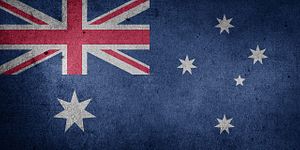It has now been over 20 years since the United Nations Security Council launched its Women, Peace, and Security agenda (Resolution 1325). The initiative was designed to find ways to make women’s voices and leadership fundamental to the comprehension of global security. Its goal has been to give states a more sophisticated understanding of conflict, peace-building, and humanitarian responses, and to understand the prevalence of gender-based violence in conflict zones, but also to understand the centrality of women to breaking the cycles of conflict.
The approach has come to recognize that the safety and advancement of women — and facilitating structures that value and promote their welfare — accelerates economic development and positive community outcomes. In recognition of this, Australia recently just launched its second National Action Plan on Women, Peace, and Security (NAP), a set of strategic guidelines to drive Canberra’s approach to conflict-affected regions over the next decade.
Women and girls often suffer the effects of conflict disproportionately to men. This can include experiencing sexual and gender-based assaults (rape as a weapon of war), as well as unequal access to food, healthcare, education, justice, economic opportunities, and citizenship rights. Understanding these dynamics within conflict zones, and not simply focusing on conventional instruments of violence, is essential to not only providing secure and healthy lives for individual women, but also to be able to construct a lasting peace for whole communities.
A central component of this is women’s ability to participate fully and meaningfully in conflict prevention and peace-building processes. The NAP recognizes the value of female leadership when it notes that “[w]hen women are fully included in decision-making, societies are more likely to prevent & resolve conflict & establish enduring peace outcomes.”
However, while the advancement of women into leadership roles is able to often produce positive community outcomes, it can also produce a backlash from men who feel disenfranchised by female participation. The National Action Plan (NAP) acknowledges that “[w]hen women are politically active — particularly women human rights defenders — they are often explicitly targeted with violence to deter their participation in decision-making processes.”
This is one of the most pressing problems that societies face, both in regions of conflict and peace: male resentment, and the destabilization that it creates. The NAP doesn’t do enough to outline an approach that could help alleviate this problem. The document does recognize the damage created by “harmful gender norms,” and suggests an obvious goal to “replace” them, but it delegates responsibility for this to women’s rights organizations operating in regions of conflict.
What is missing in regions of conflict is the necessary leadership from local male authority figures to embody and project a peaceful masculinity. These leaders need to take responsibility to not only eschew violence as a political tool, but also as a personal tool, to understand how the habits of cooperation in communities are built at a personal level, and that this can then extend to a political level.
This may be incredibly difficult in regions of conflict, where male resentments can attach themselves to deep historical cultural animosities. The difficulty is compounded when we remain tied to an assumption that violence is an immovable part of masculine nature and identity. It leads us to make excuses for male violence, or indeed to glorify it, as many aspects of war are.
The NAP does highlight that Canberra provided assistance to The Asia Foundation to engage with religious leaders in Afghanistan to better understand the rights of women and the social benefits that flow from these rights. But Canberra further developing its own programs that seek to counteract negative gender norms and destructive behavioral patterns should be considered an essential component of the Women, Peace, and Security agenda, and a more prominent arm of Australia’s humanitarian assistance and overall foreign policy.
While not specifically labelling its external approach a “feminist foreign policy” as other countries have, Australia has come to internalize many aspects of the ideas that drive these foreign policies, and the NAP is an important demonstration of this. However, a greater focus on gender should not become a marker that Australia uses for its humanitarian aid to developing countries and fails to live up to at home.
An incredibly important aspect of the NAP is that it rightly recognizes that the credibility of Australia’s approach to the Women, Peace, and Security agenda relies on domestic commitments to the ideals that drive the initiative. Improving outcomes for women and children within Australia remains a pressing concern. Domestic violence is the world’s primary security issue, and it should not be siloed away from the Women, Peace, and Security agenda because Australia isn’t considered a “conflict zone.” It is a conflict zone for far too many women and children.

































